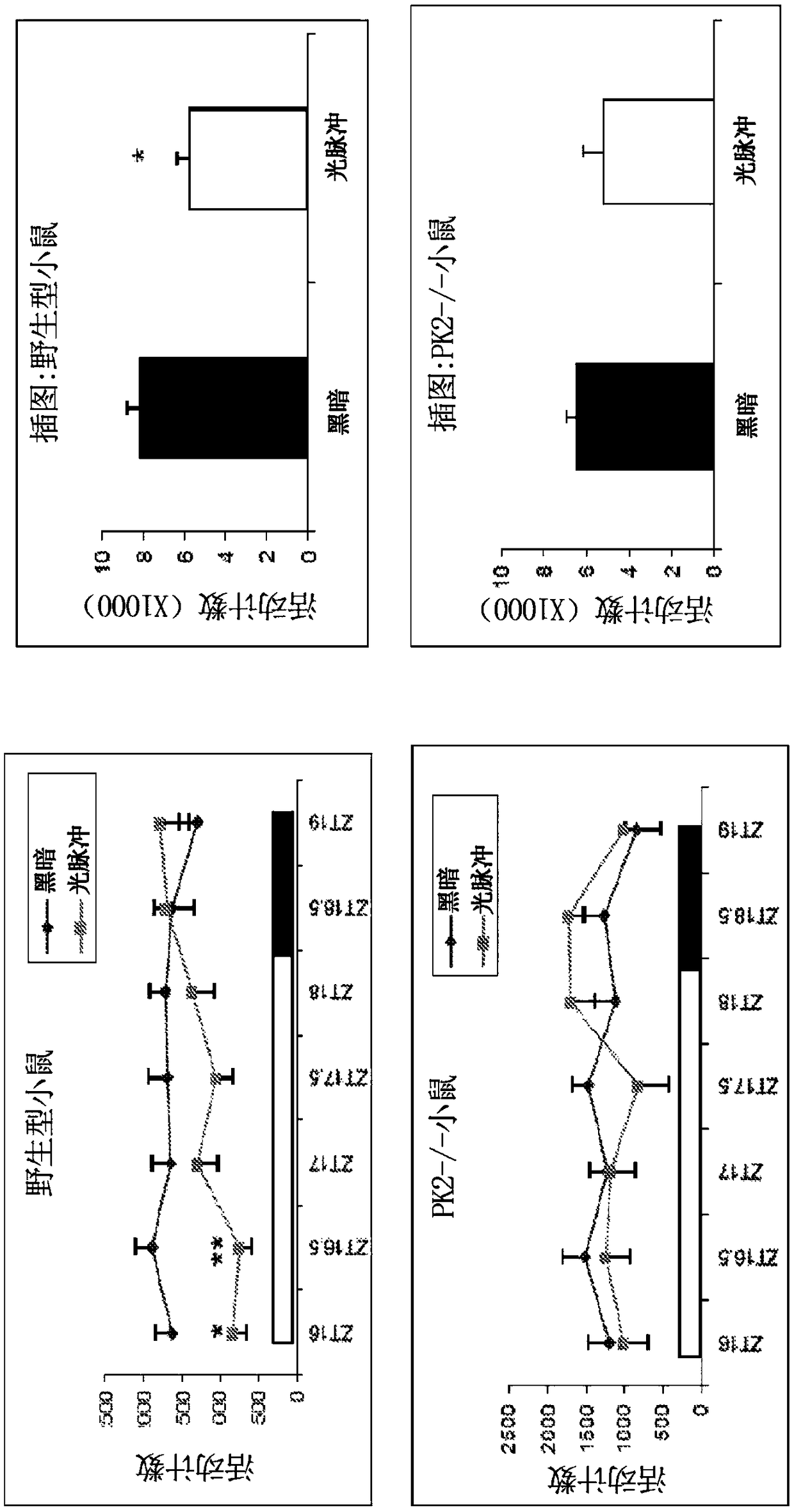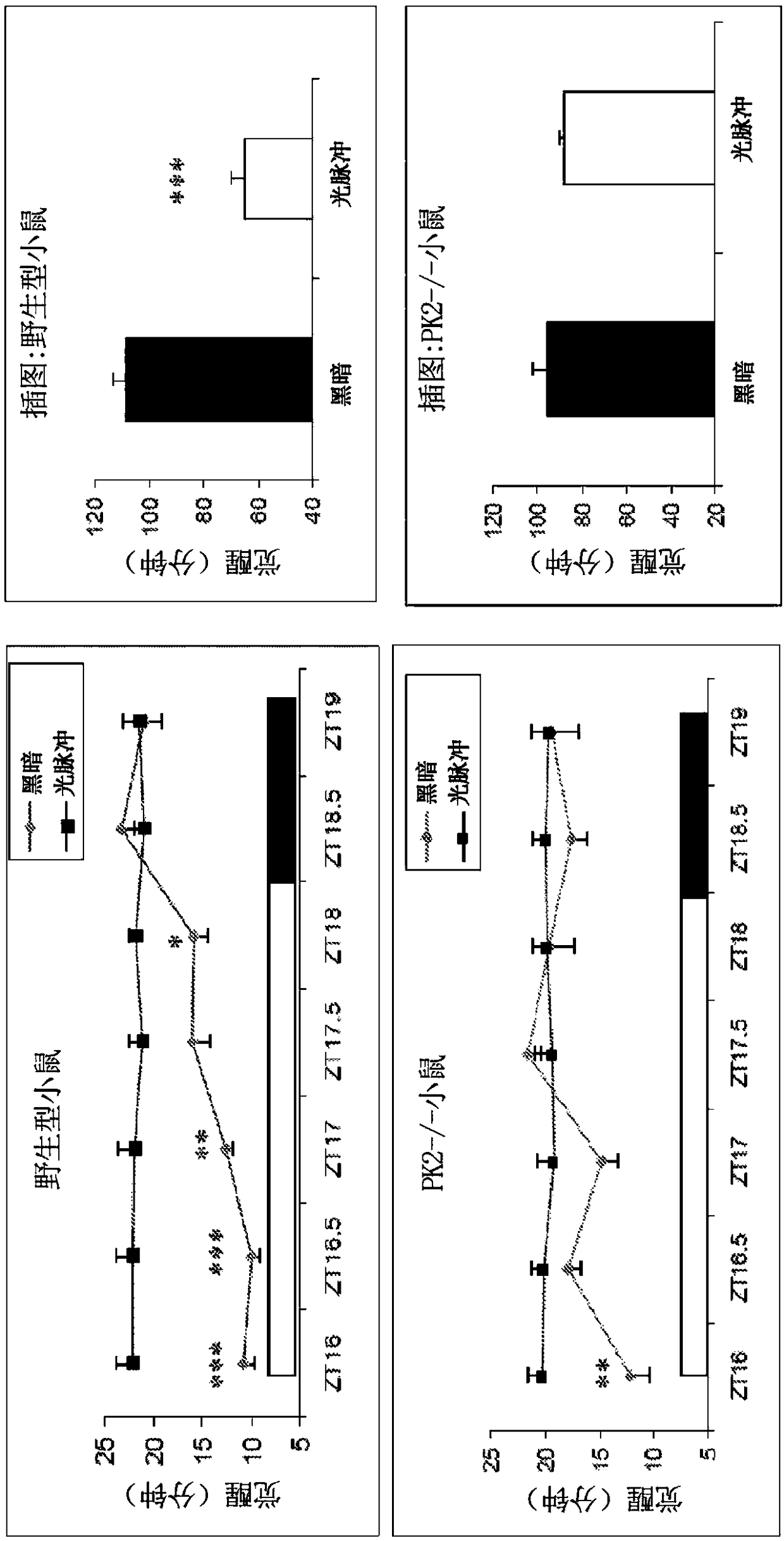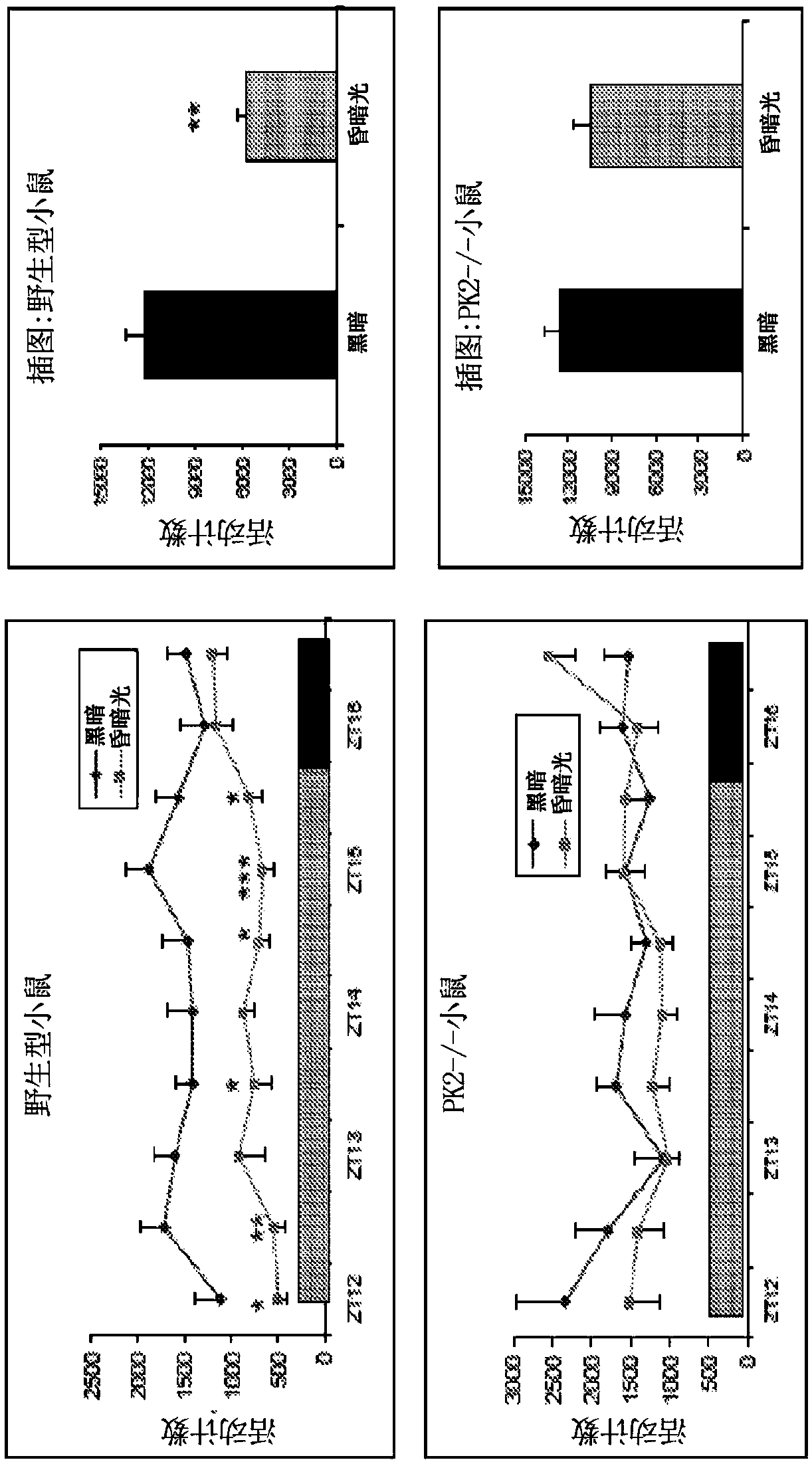Compositions and methods for treating disorders of circadian and diurnal rhythms using prokineticin 2 agonists and antagonists
A technology of circadian rhythm and composition, which is applied in the direction of drug combination, anti-inflammatory agent, drug delivery, etc., and can solve the problem of limited circadian animals
- Summary
- Abstract
- Description
- Claims
- Application Information
AI Technical Summary
Problems solved by technology
Method used
Image
Examples
Embodiment 1
[0161] Example 1: Novel neural and molecular mechanisms for day and night determination in mammals
[0162] This example demonstrates that the methods provided herein are effective in altering circadian rhythm or timing in mammals, treating psychiatric conditions or symptoms due to alterations in the human circadian regulatory system, treating sleep problems in mammals, or Induces sleep or activity suppression, or causes wakefulness or wakefulness responses. This paper describes for the first time a novel neural and molecular mechanism for day and night determination in mammals. Here, we demonstrate that peristalin 2 (PK2), previously shown to be an output molecule of the suprachiasmatic circadian clock, is expressed in intrinsically photosensitive retinal ganglion cells and that PK2 signaling is responsible for light-induced inhibition of activity and arousal in mice. needed. Between nocturnal mice and diurnal monkeys, signaling receptors for PK2 were shown to be differen...
Embodiment 52
[0184] Pharmacological experiments to detect the effect of PK2 antagonists on the activity or arousal level of mice and monkeys :
[0185] A PK2 antagonist (PKRA83) was prepared similarly as described 53 . PKRA83 (40 mg / kg) was administered intraperitoneally to mice at ZT6. PKRA83 (10 mg / kg) was administered intramuscularly to monkeys at ZT10. For pharmacological experiments, animals were treated with either vehicle or antagonist and then crossed one week later with the opposite treatment to form paired controls.
[0186] Sleep and activity data were obtained from PK2 antagonist-treated or control-treated mice and analyzed as described for PK2- / - mice. For sleep studies in monkeys, young adult monkeys (Macaca fascicularis) were housed under a standard light (white light -250 lux) and dark cycle. Measurement and analysis of arousal levels in monkeys was performed as follows. Using similar methods previously used for human subjects 54,55,56,57 and nonhuman primates 58 T...
Embodiment 2
[0199] Example 2: PK2 functions as a signaling molecule linking ipRGCs to the brain
[0200] This example describes studies showing that PK2 functions as an output molecule for the circadian clock in ipRGCs to regulate wakefulness and sleep in mammals, and that PK2 antagonists induce or promote sleep.
[0201] The circadian clock in the retina is primarily thought to regulate local physiology and functions such as electroretinogram amplitude and phagocytosis of the outer segment of the photoreceptor optic disc. Our results reveal that PK2 functions as an output molecule of the circadian clock in ipRGCs to regulate wakefulness and sleep in mammals.
[0202] found increased expression of PK2 in the outer nuclear layer of the retina during continuous darkness. Such as Figure 9As shown, the expression of PK2 in the outer nuclear layer of the retina was much higher at CT4 than at ZT4. Cell counts revealed that at ZT4, the percentage of photoreceptors that were PK2 positive wa...
PUM
 Login to View More
Login to View More Abstract
Description
Claims
Application Information
 Login to View More
Login to View More - R&D
- Intellectual Property
- Life Sciences
- Materials
- Tech Scout
- Unparalleled Data Quality
- Higher Quality Content
- 60% Fewer Hallucinations
Browse by: Latest US Patents, China's latest patents, Technical Efficacy Thesaurus, Application Domain, Technology Topic, Popular Technical Reports.
© 2025 PatSnap. All rights reserved.Legal|Privacy policy|Modern Slavery Act Transparency Statement|Sitemap|About US| Contact US: help@patsnap.com



